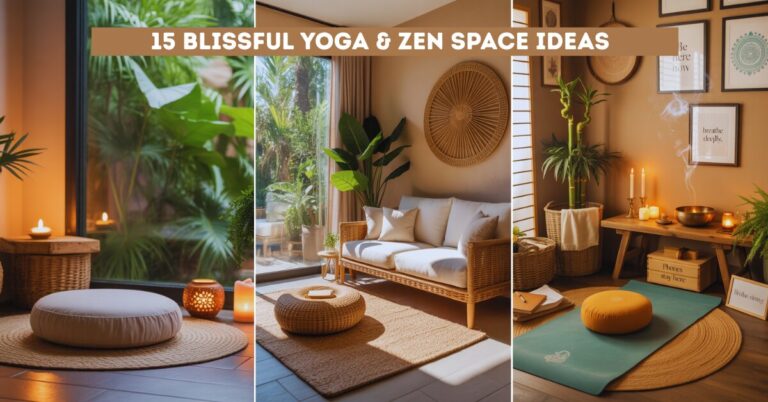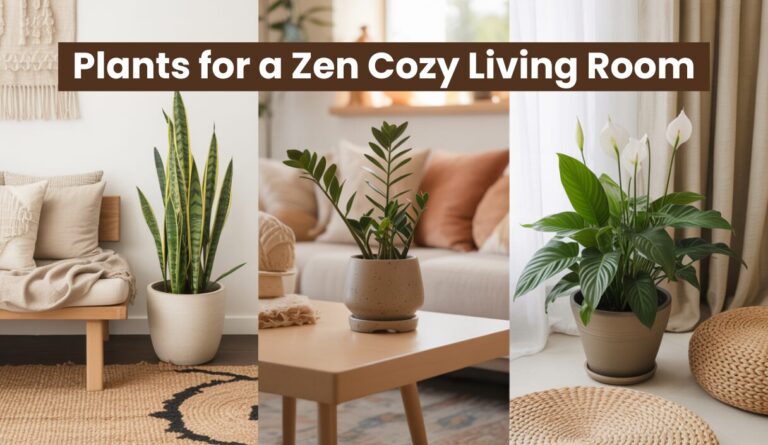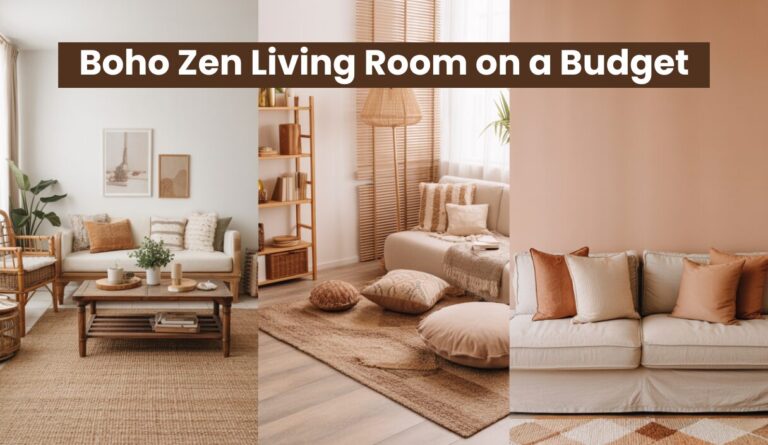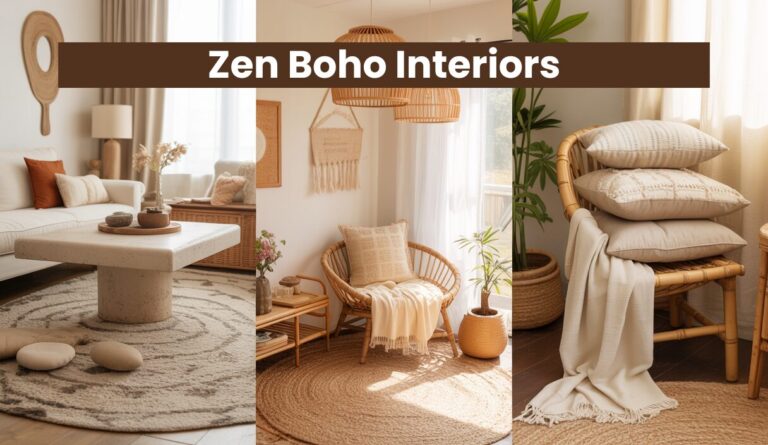Best Rugs and Textiles for a Cozy Zen Living Room Vibe
A cozy, zen-inspired living room is the perfect retreat from our fast-paced world. It invites stillness, encourages mindfulness, and embraces natural beauty. While minimalism and calming colors play a big role in zen decor, rugs and textiles are what truly bring warmth and texture to the space.
In this guide, we’ll explore the best rugs and textiles for a cozy zen living room vibe, including the most soothing materials, calming color palettes, and layout tips that harmonize with a peaceful lifestyle. Whether you’re designing a brand-new space or upgrading your current one, this post has everything you need to create the ultimate zen sanctuary.
Why Rugs and Textiles Matter in a Zen-Inspired Space
Zen decor is rooted in simplicity, tranquility, and connection with nature. While clean lines and uncluttered spaces are essential, a room can feel cold or empty without the soft touch of textiles. Rugs, throws, pillows, and curtains soften the space, promote relaxation, and ground the room with texture and warmth.
Key reasons why textiles are essential in a cozy zen living room:
- Absorb sound and create a quieter, more meditative atmosphere
- Provide tactile comfort and visual softness
- Add subtle layers of texture and depth
- Encourage a floor-sitting culture common in traditional Japanese interiors
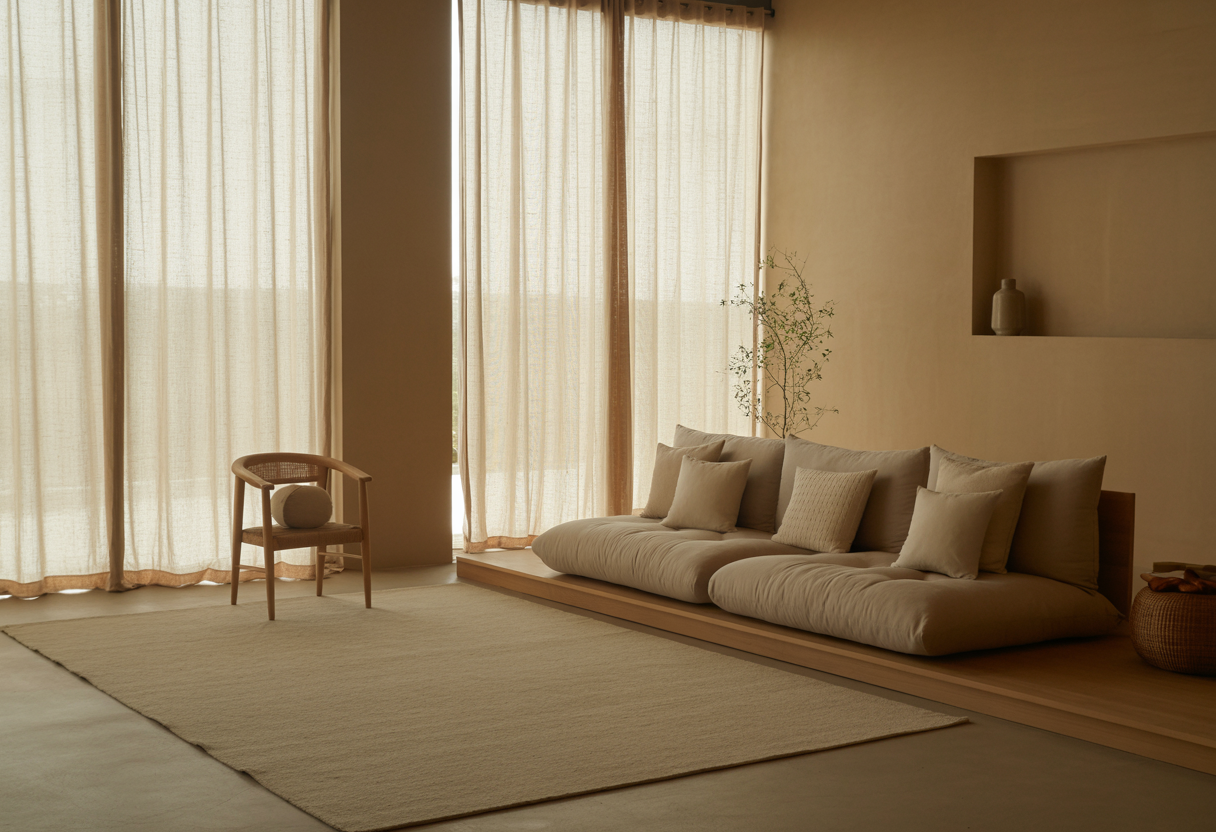
1. Choose Natural Fiber Rugs for Grounding Energy
When it comes to zen living room rugs, natural materials are non-negotiable. Think of fibers that are soft underfoot, breathable, and organic.
Best rug materials for a zen space:
- Wool: Warm, soft, and naturally dirt-resistant
- Cotton: Lightweight and breathable
- Jute & Sisal: Earthy texture with a rustic feel
- Hemp: Durable and eco-conscious
Avoid synthetic blends that can feel artificial and disrupt the serene energy of the room.
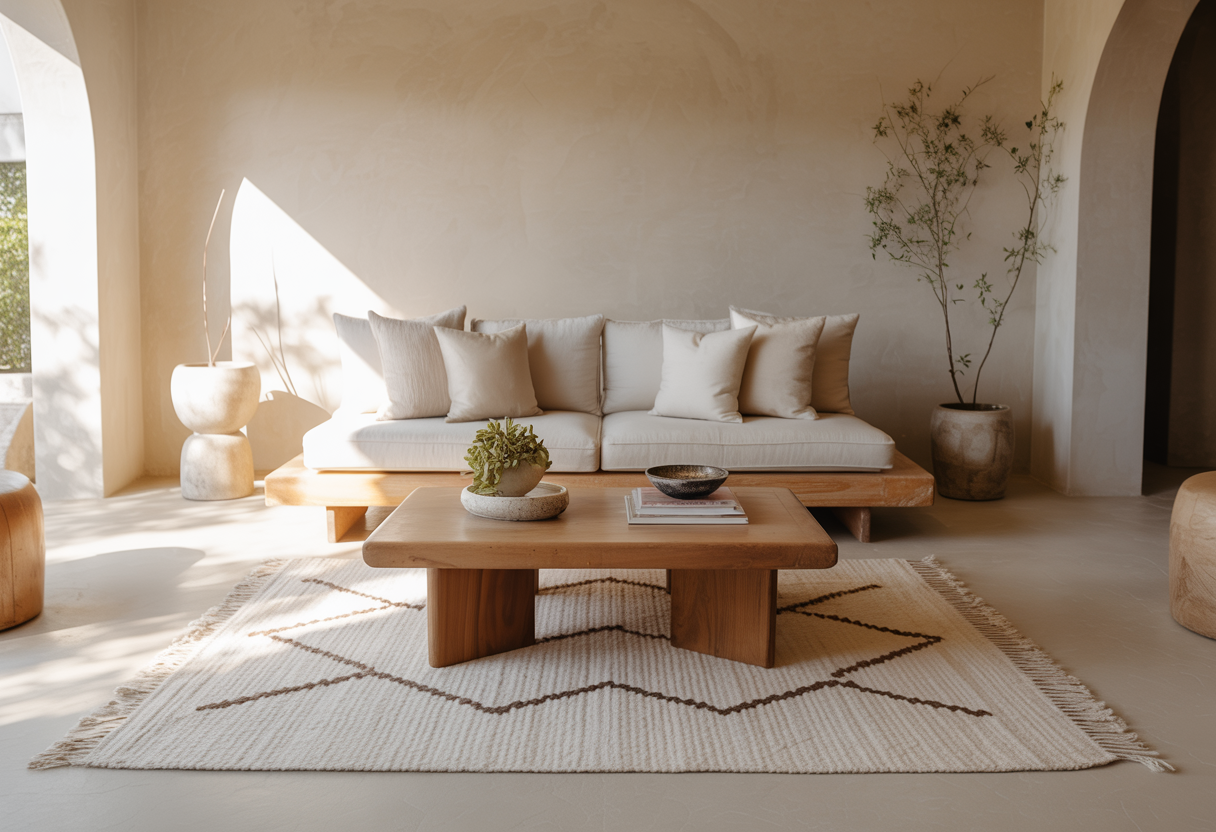
2. Embrace Neutral and Earthy Color Palettes
Zen design revolves around calming, nature-inspired hues. When selecting rugs and textiles, opt for colors that evoke tranquility.
Best colors for zen textiles:
- Beige and taupe for a warm, grounding effect
- Muted greens and sage to echo natural greenery
- Soft grays and stone tones for balance
- Off-whites and ivory to keep things bright yet serene
Avoid busy patterns or high-contrast combinations. Subtle textures and tone-on-tone details are ideal.

3. Layer Rugs for Extra Warmth and Texture
Layering is a powerful design technique for small or large spaces alike. In a zen cozy living room, it adds a touch of lived-in warmth while still maintaining a refined, intentional look.
How to layer rugs:
- Place a jute or flatweave base rug
- Add a plush wool or shag rug on top in a smaller size
- Use layering to define a meditation corner or reading nook
This strategy softens harsh flooring and adds dimension without visual noise.
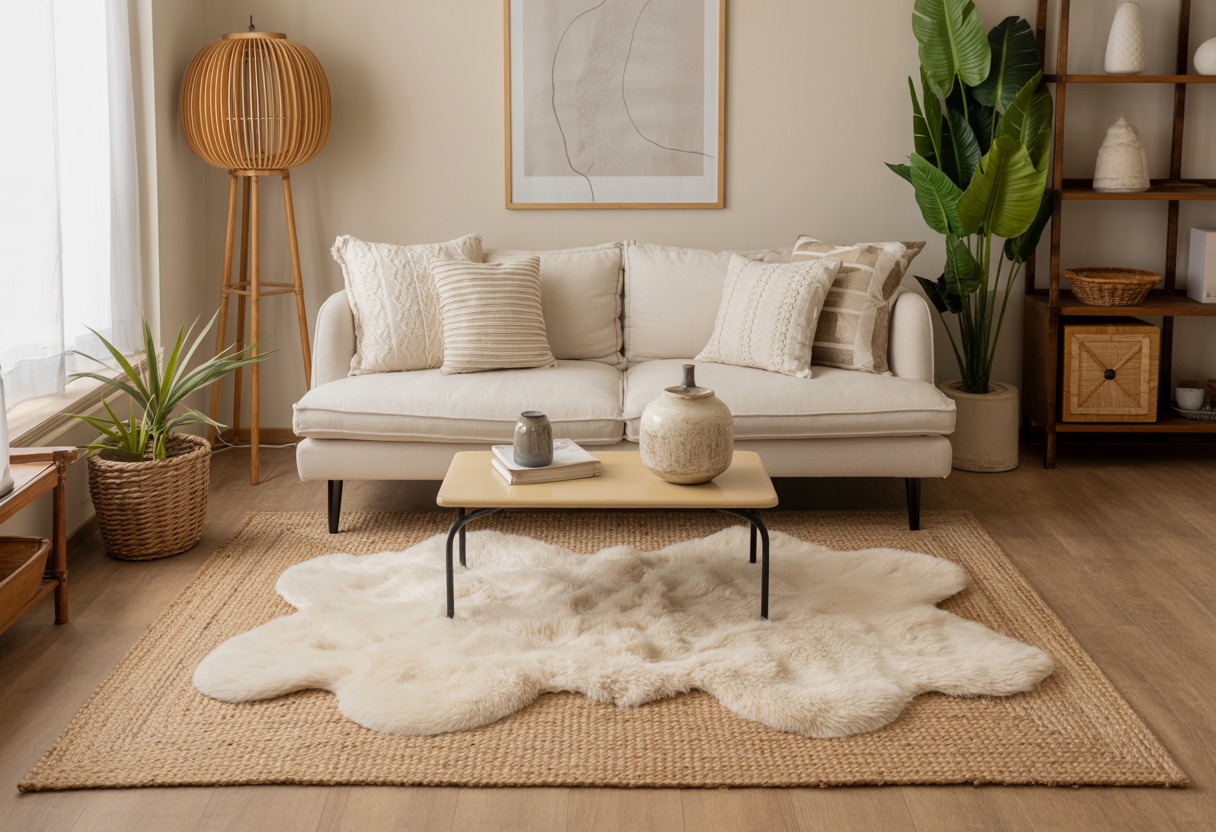
Image Placeholder #4
AI Image Prompt: A living room with a large jute rug layered beneath a smaller cream shag rug, surrounded by a bamboo floor lamp and low coffee table, styled in a cozy zen design.
4. Add Floor Cushions and Tatami-Style Mats
Inspired by traditional Japanese interiors, floor seating adds authentic zen charm. Floor cushions (zabutons) and tatami-style mats encourage mindful sitting, stretching, or tea time close to the ground.
Choose cushions with:
- Organic cotton or linen covers
- Muted, earthy tones
- Firm support yet soft texture
Tatami mats can be used as standalone seating areas or rug replacements for low-traffic zones.
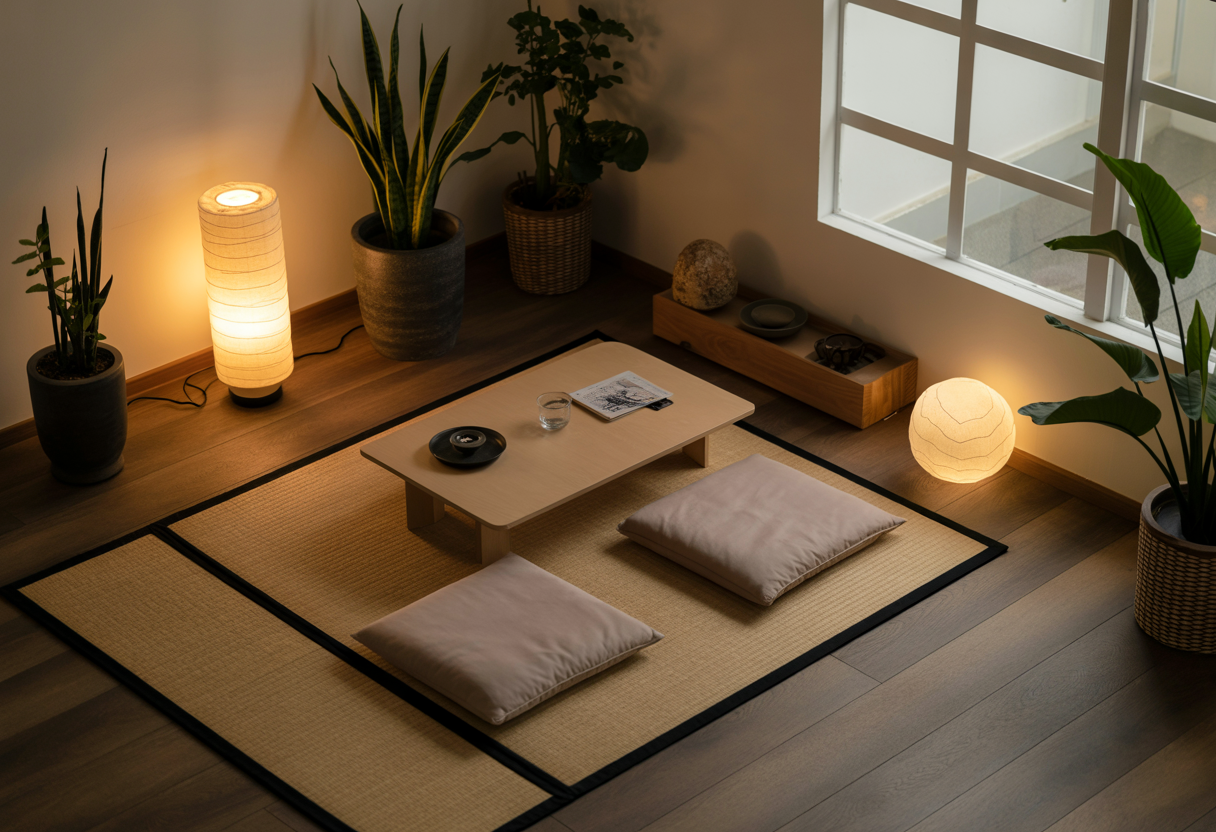
5. Choose Cozy, Breathable Throws
Blankets and throws aren’t just functional—they’re also visual cues for relaxation. In a zen space, opt for throws that are breathable, ethically made, and beautifully textured.
Top materials to consider:
- Cotton waffle throws for lightweight comfort
- Chunky knit wool throws for added warmth
- Linen gauze blankets for a breezy look
Drape throws casually over the arm of your sofa or roll them into a basket for guests to grab.
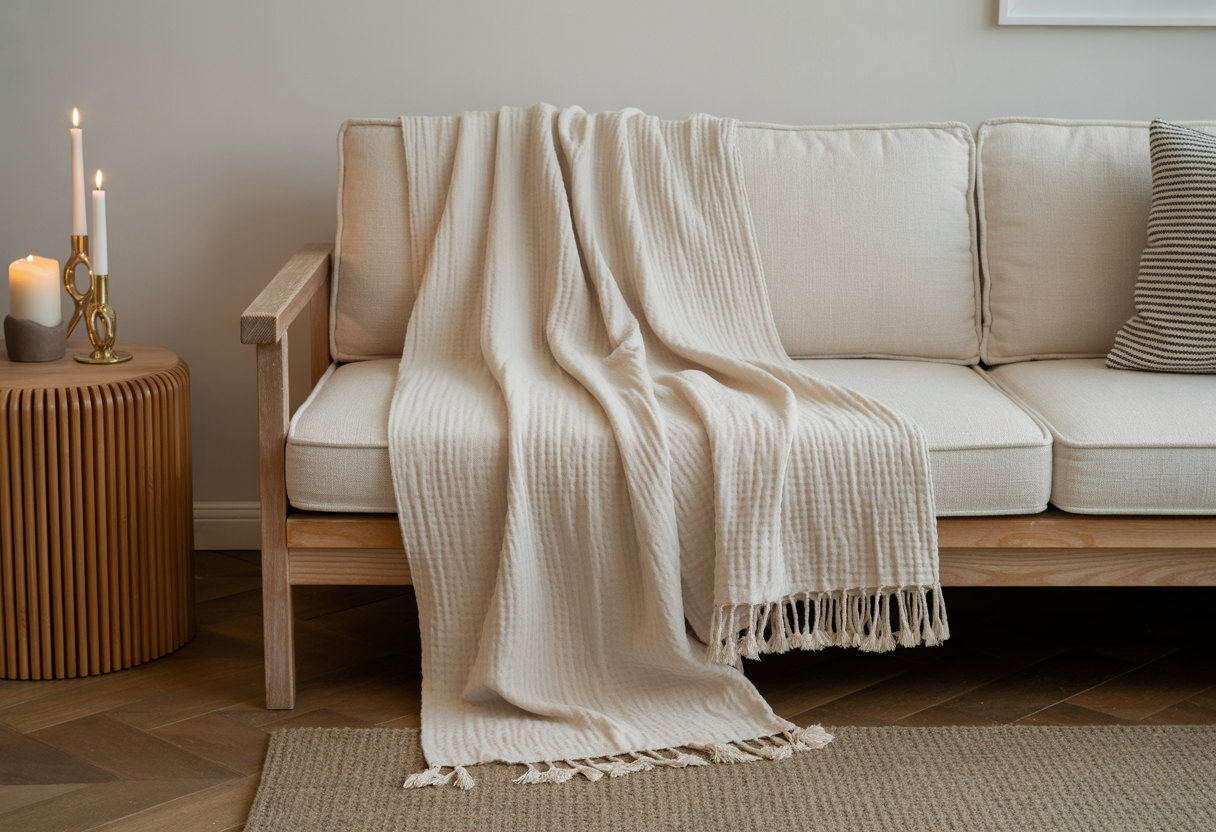
6. Use Linen or Cotton Curtains for Soft Light Control
Curtains affect the flow of light and energy in your zen living room. Look for natural fabrics that filter light softly without blocking it completely.
Best zen curtain choices:
- Linen curtains in off-white or natural flax
- Cotton sheers for an airy effect
- Tab-top or grommet styles for clean lines
Avoid heavy blackout curtains or synthetic blends.
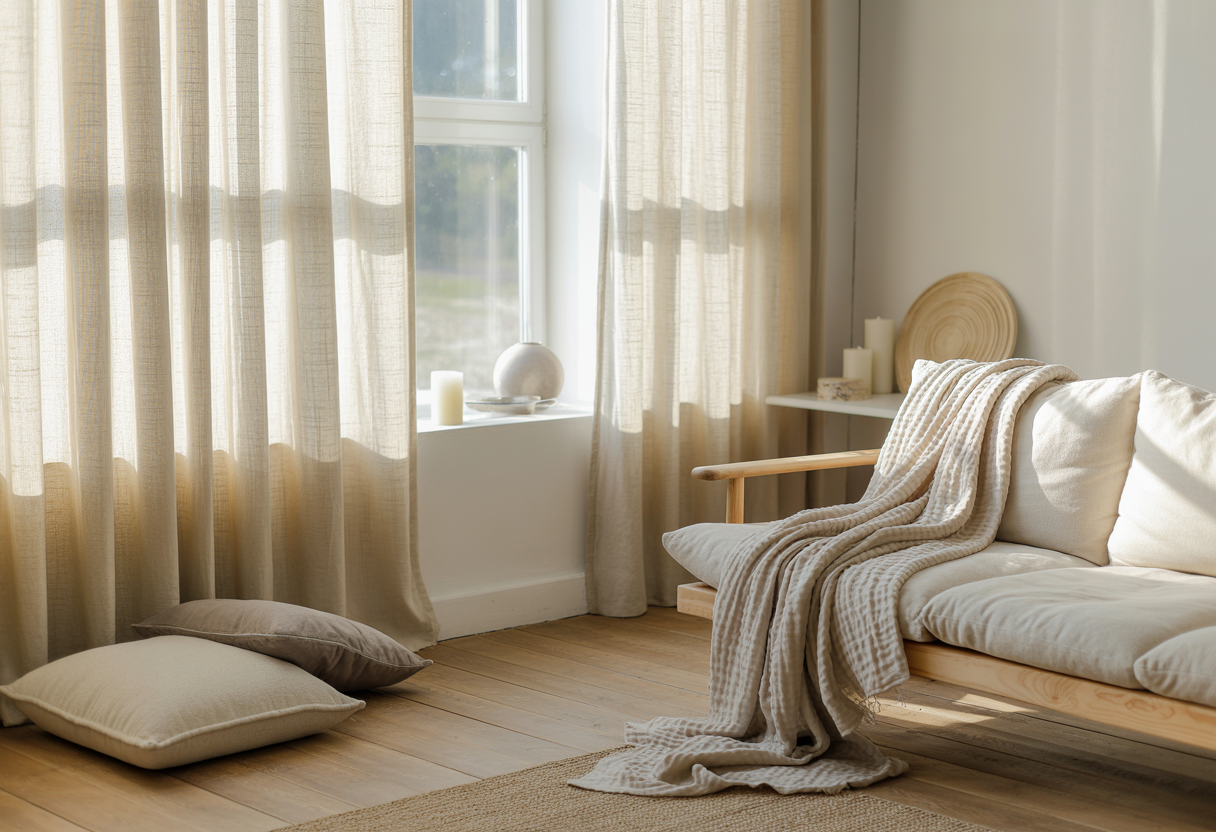
7. Keep Patterns Minimal and Meaningful
While zen style leans toward solids, you can introduce patterns sparingly. Opt for patterns that have meaning, are nature-inspired, or are culturally rooted in eastern aesthetics.
Ideas for subtle pattern use:
- A soft wave pattern symbolizing water
- Koi or crane motifs for peace and longevity
- Simple geometric lines or asymmetrical shapes
Use these on a single item like a throw pillow or area rug, not across multiple pieces.

8. Opt for Handcrafted Textiles and Artisan Touches
Handcrafted items carry a sense of soul and intention—core aspects of zen living. Choose handmade or locally crafted textiles when possible.
This could include:
- Handwoven kilim or dhurrie rugs
- Block-printed throw pillows
- Artisan-made natural fiber wall hangings
These items not only support sustainable craftsmanship but also help your space feel personal and grounded.
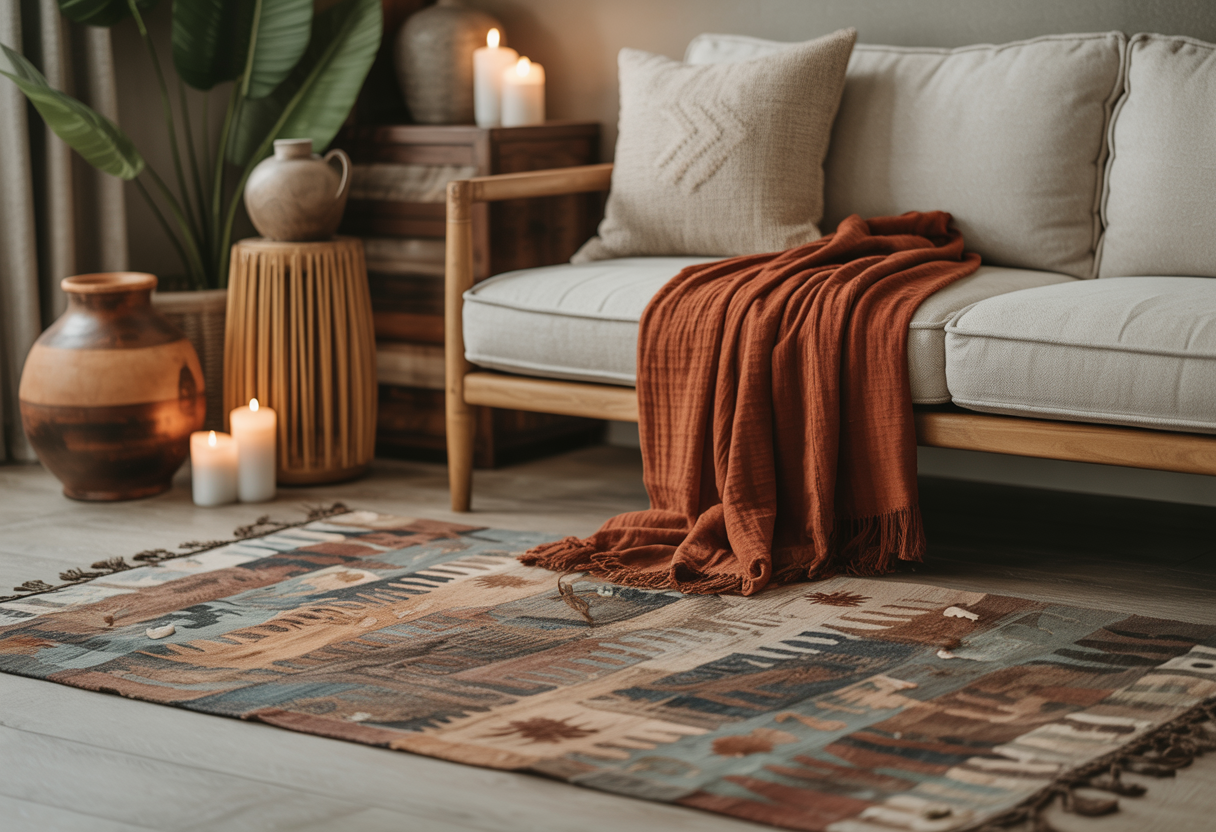
9. Use Pillows for Gentle Support and Texture
Pillows serve both comfort and aesthetic purposes. Mix and match textures more than colors to maintain zen cohesion while avoiding visual flatness.
Best pillow cover fabrics:
- Washed linen
- Brushed cotton
- Textured canvas or wool blends
Stick to 2–3 shades from your existing palette and vary the sizes for visual interest.
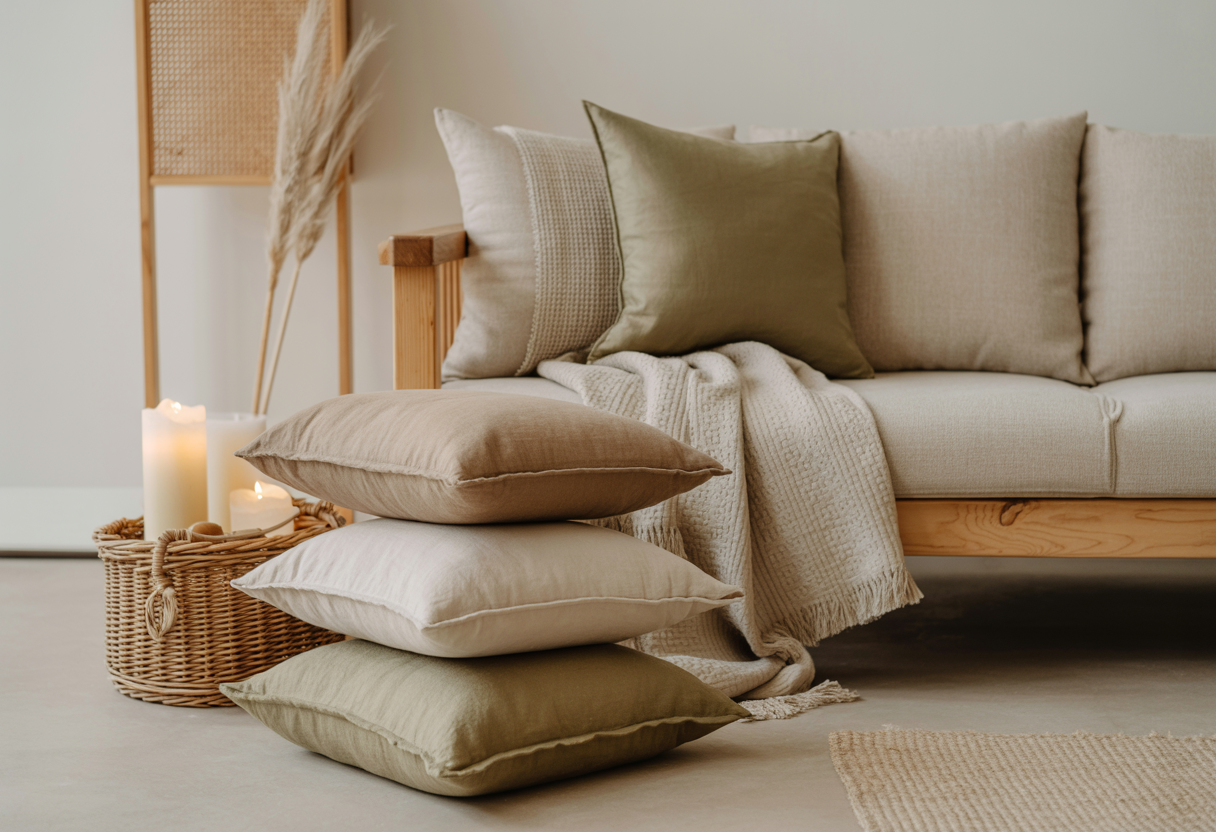
Final Thoughts: Layering Calm, One Textile at a Time
Creating a cozy zen living room is all about thoughtful layering. With the right mix of rugs, pillows, throws, and curtains, you can bring serenity, softness, and grounding energy into your home. Focus on natural materials, neutral tones, and intentional design, and you’ll have a space that feels like a daily retreat from the outside world.
Don’t be afraid to personalize—your cozy zen sanctuary should reflect not only peace, but also your lifestyle and values. Let your textiles tell a quiet story of comfort, sustainability, and stillness.


